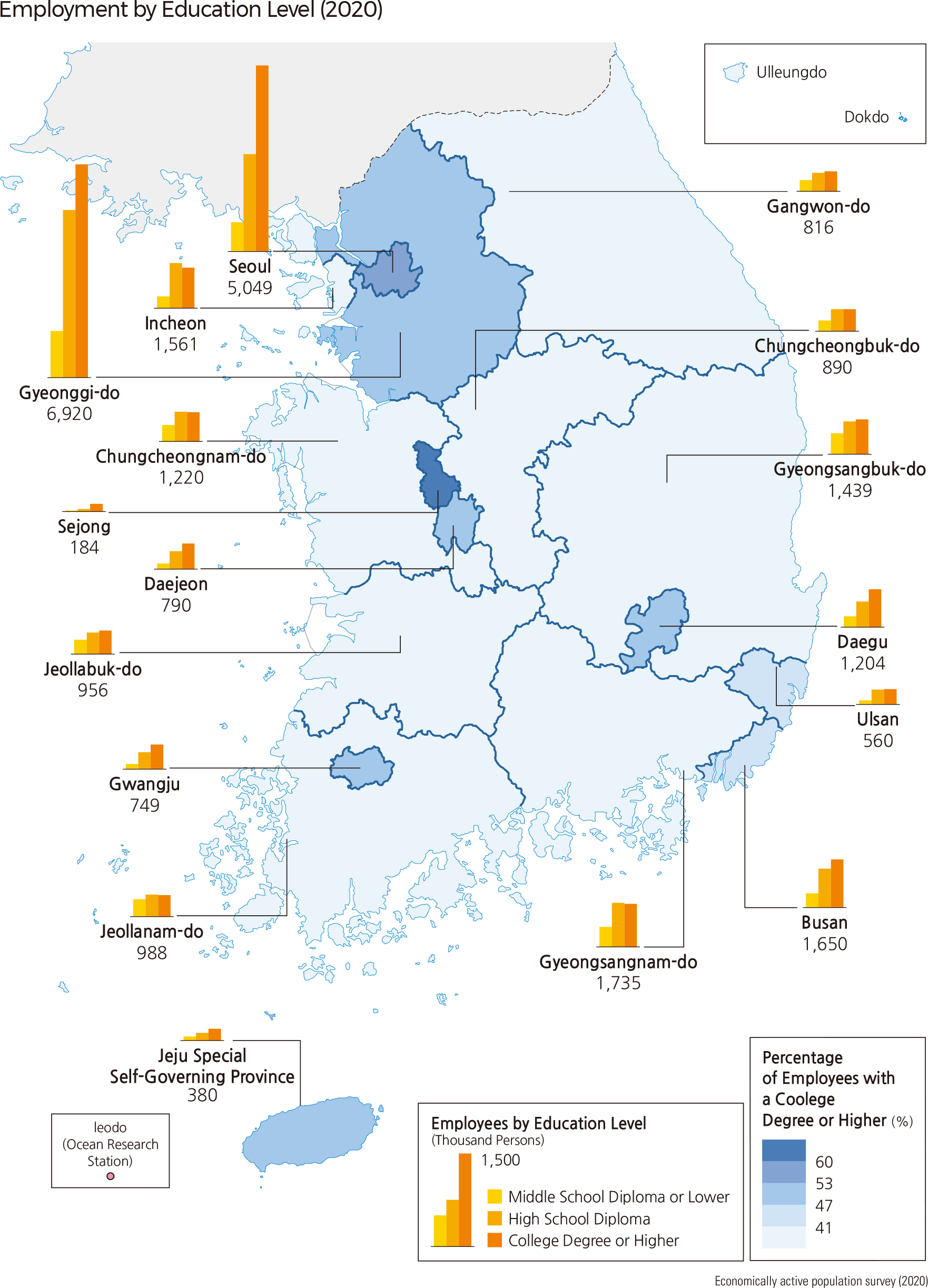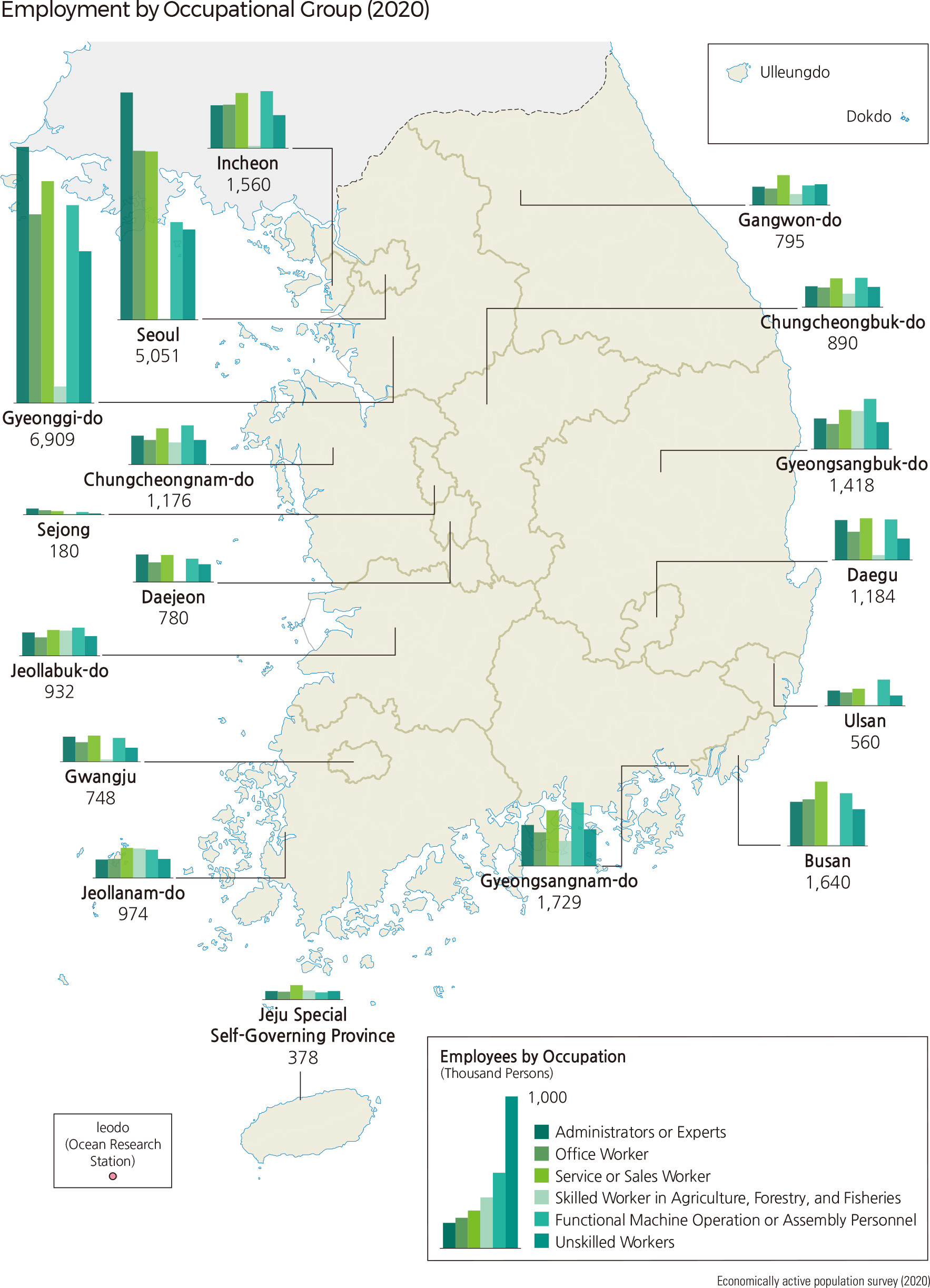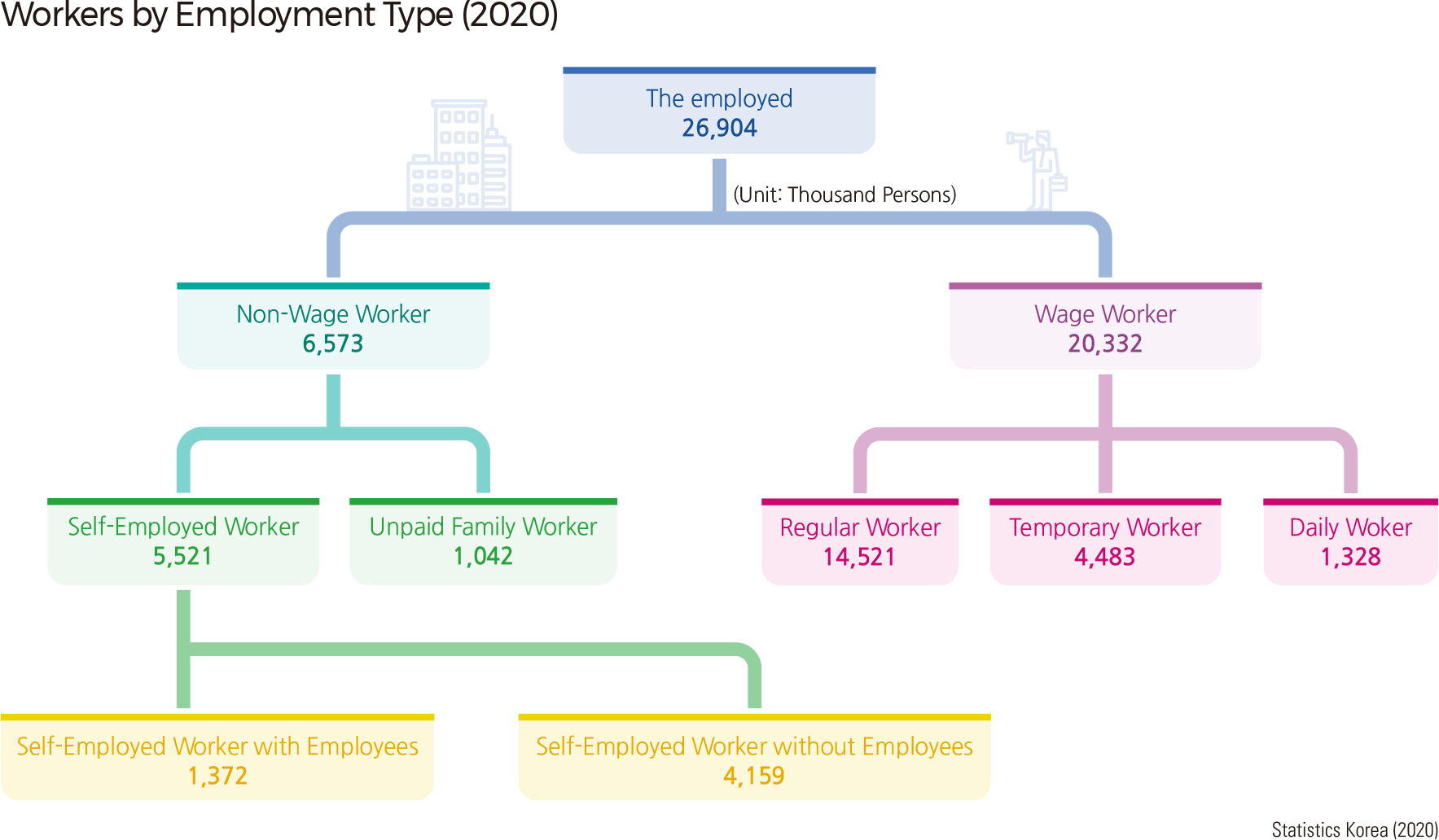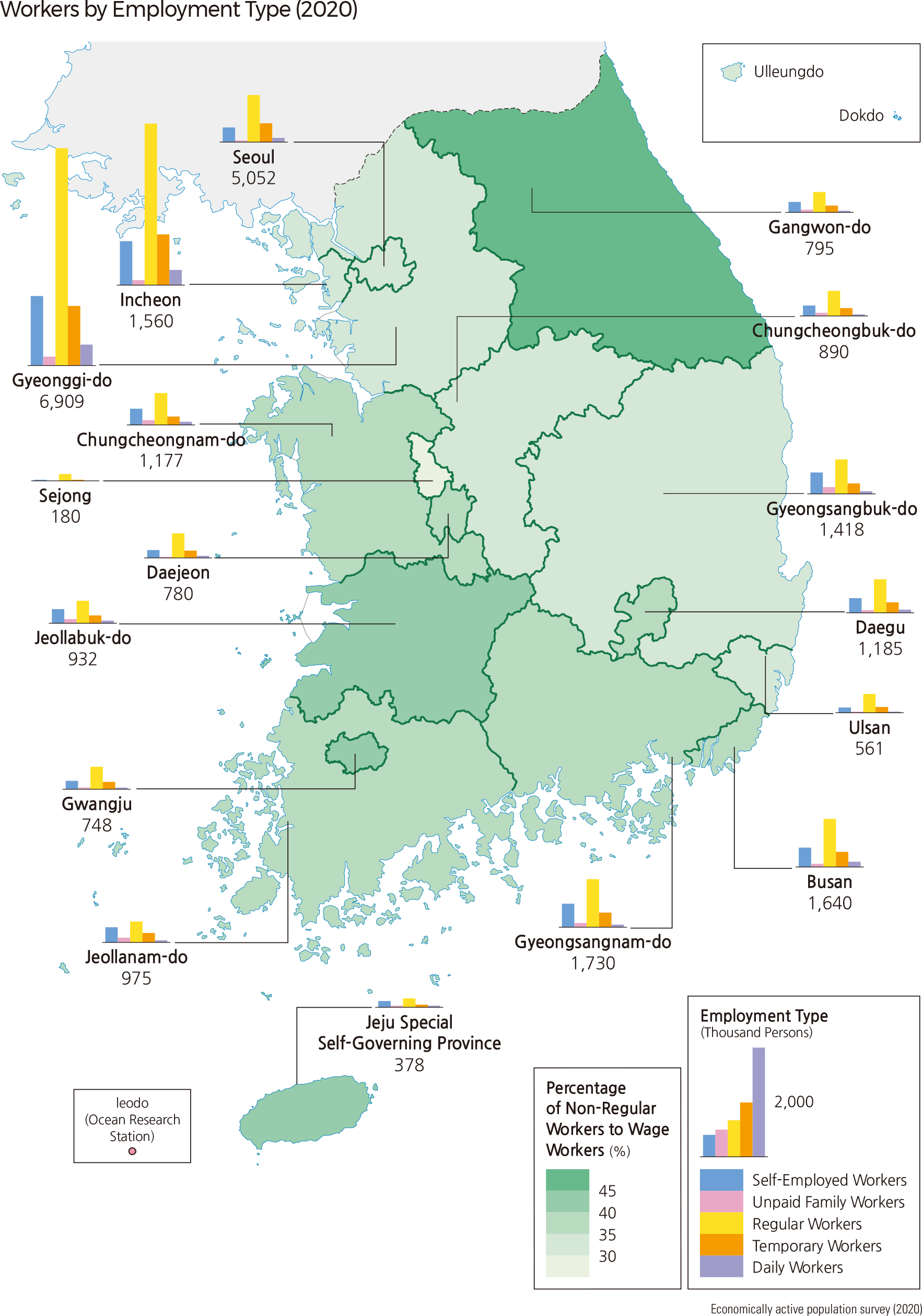English III 2021
Unemployment rates are usually higher in large metropolitan areas because of the higher demand for employment that attracts job seekers to these areas. For the same reason, there is a greater fluctuation in unemployment rates in cities depending on the economic situation. Along with the overall aging of the Korean population, the age of the employed is also increasing. As of 2020, 67.1% of middle-aged (30-60 years old) are employed, 18.9% of elderly (60+), and 14.0% of youth (15-29 years old). Compared to 2000, the share of employed young people decreased by 9%, while the share of the elderly doubled. By occupational status, regular workers (54.0%), self-employed workers (20.6%), temporary workers (16.7%), daily workers (4.9%), and unpaid family workers (3.9%) are in order. Half of the wage earners, including regular workers, temporary workers, and daily workers, work in the Seoul Metropolitan Area. For the past 20 years, the proportion of regular workers has steadily increased, while the proportion of self-employed people has decreased. The ratio of non-regular workers to wage workers, on the other hand, stood at 36.3% in 2020, remaining in the mid-30% range for the past decade. As the overall education level of the younger generation increases and the industrial structure is advanced due to the growth of the producer service industry, the higher education level of the employed is evident. As of 2020, the proportion of college graduates employed is 48.0%, and highly educated workers are concentrated in large cities, particularly in the Seoul Metropolitan Area. The number of employed by occupation nationwide is service/sales workers (22.1%), followed by managers/experts (21.8%), functional machine operation and assembly workers (19.7%), office workers (17.4%), simple labor workers (13.8%), and skilled agriculture, forestry, and fishing workers (5.1%). The composition of each region corresponds to the industrial structure of the region. For example, the proportion of managers and experts in Seoul and the proportion of functional machine operation and assembly workers in Ulsan are above average. |






